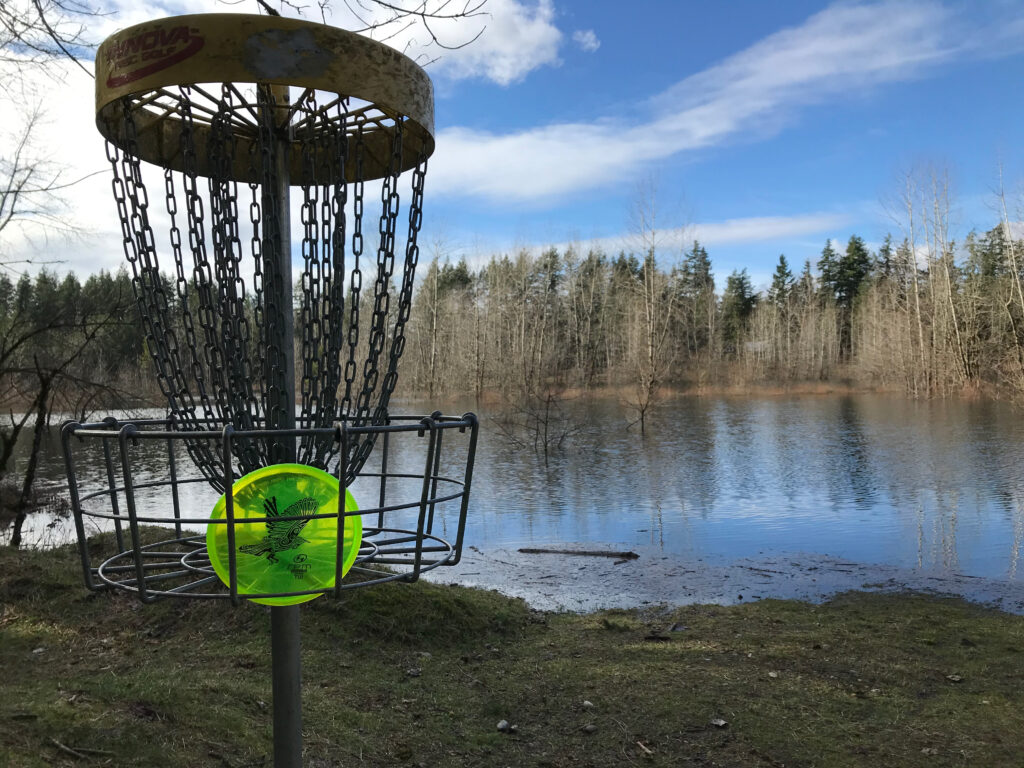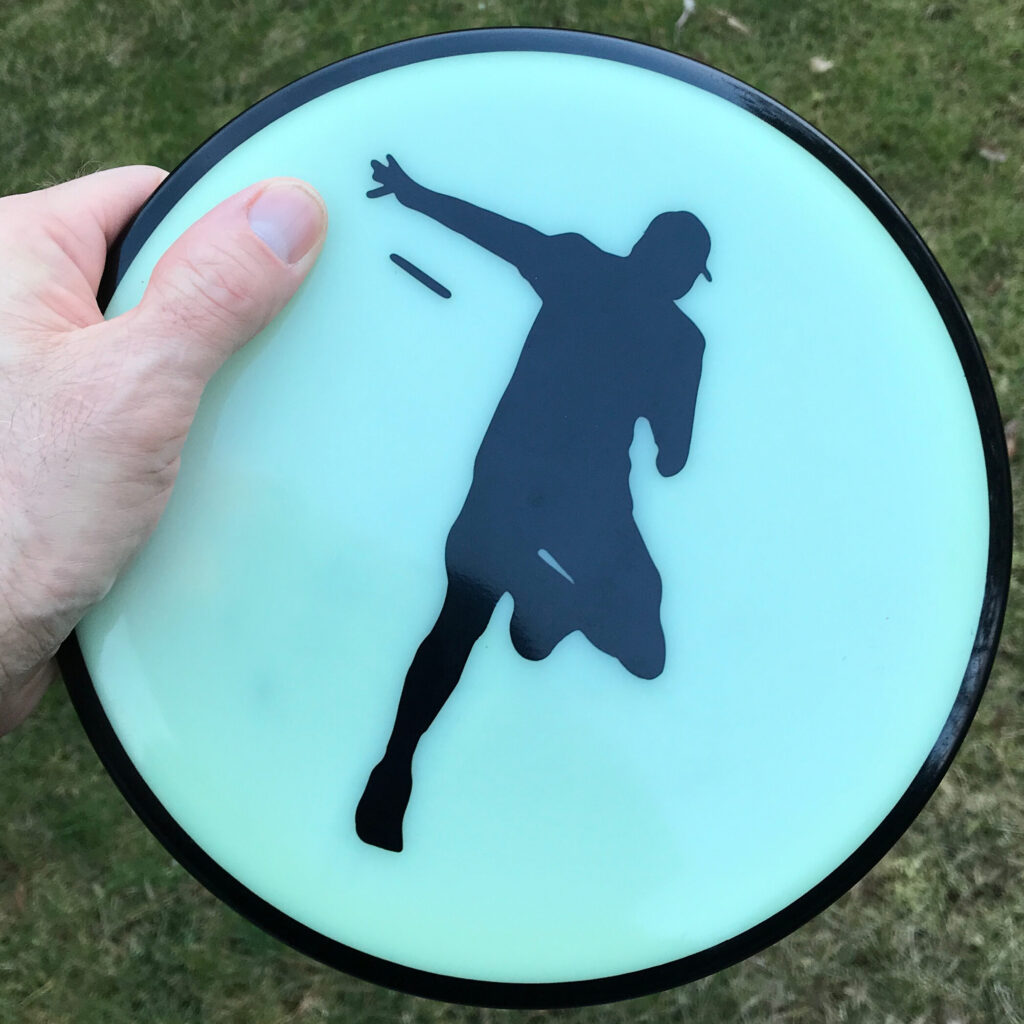Check out the RPM discs I throw and why. I may not know if I’m playing on Blackwood North, or Northwood Black (🙄) but I know I like the current make up of my bag!
Category Archives: Disc Reviews
Tui time!
Tui (putter). the Tūī are “unique to New Zealand and belong to the honeyeater family, which means they feed mainly on nectar from flowers of native plants.” If the basket is the flower of disc golf, then the Tui is the best disc in my bag for feeding on its nectar! Like the other RPM discs, the Tui is fast for it’s class, but it is a straight flyer. Using a spin putt from distance, I can put the Tui on a dead line to the basket that will always make a run from 45 – 60+ feet. Inside the circle that disc is easy to use with a push putt style and it’s straight line run means few side to side misses. All in all, the most valuable tool in my bag!
Kotuku
Kotuku (midrange). the Kotuku is valued by the Māori for its elegant white feathers, and has long legs and a long, thin neck, “which has a distinct kink when flying.” As a solidly over-stable midrange, that describes the Kotuku disc perfectly. Like the Piwak, it is a fast midrange and perfect for a hyzer approach when you don’t want to risk running long. It’s stability also makes it a useful forehand approach disc. I never have a question as to what line this disc will take, or where it will land.
Piwakawaka
Piwakawaka (midrange). I’d put this one in the bag solely for its awesome name! “What was that you just threw?” “A Piwakawaka!” It rolls off the tongue!
On a more serious note, Piwakawaka is the Māori word for the New Zealand Fantail, a smaller bird more appropriate to a midrange disc. The RPM site aptly describes the disc as a reliable straight disc, that will easily hold a line, with a sneaky long glide. I was surprised at how fast and long the disc flew. Made with a comfortably soft plastic, I was able to use a fan grip, rather than a power grip. For midrange throws, I much prefer the fan grip for added control, but traditional hard plastics can get a rough edge that scrapes on release. The soft plastic used for the Piwakawaka makes it easy to grip and comfortable to throw.
For me the flight had more flip to it than the promised straight line, but that is fine with me as I prefer using a flip hyzer line for most of my midrange tosses. The disc runs quite fast, again out distancing most of my current mid-range discs with very little effort. While I am still fine tuning the lines I take with this disc, it’s become my mid-range staple.
The Kahu
Kahu (Distance Driver). Kahu is the Māori name for the largest hawk in New Zealand. Like its namesake, the Kahu disc is super fast and extremely powerful, easily matching the other long distance drivers in my bag. What set the Kahu apart for me was the ease with which I was able to put it on a line and control the disc flight. Thrown flat with a traditional power grip, it was easy for me to put the disc on a straight line that stayed true for the entire flight, with a typical tail off as the disc speed dropped. With many long-range drivers I rely on the disc running an S-pattern to maximize distance.
For me, the Kahu achieved the same (or more) distance with very little bend in its flight. This opened up new lines on a number of test holes since I didn’t need to allow for substantial back-and-forth movement in the flight. With a bit of added snap, I also found the Kahu to fly well on a flip-hyzer line (released on a hyzer angle, intended to “snap” up and fly straight). All in all the Kahu, for me, is a superfast, very reliable, long distance driver that has quickly become my go-to driver.
The only draw back to your run-of-the-mill Kahu is the way it handles a head wind, where it can be vulnerable to flipping over. The Kahu comes in three flavours–under stable, stable, and over stable. Make sure you use the OS version for headwind shots.
RPM Discs
[updated 2021]
RPM Discs
In August of 2017 I had the honor of representing the United States of America at the 2017 Team Disc Golf World Championships. While there I had the chance to reconnect with friends made the year before when I directed the first Team Disc Golf World Championships in Vancouver, Canada. Most relevant for this post was catching up with Jackson Sullivan of RPM Discs in New Zealand.
Jackson brought a bunch of RPM’s discs to the event and sold them as fundraisers for the (Bronze-Medal-winning) New Zealand team. Having never thrown the discs, I bought four—two drivers, one mid-range, and one putter—solely because of their beauty. The plastic used for the discs was a flexible plastic similar to the Star plastic many players are familiar with, but it’s molded (at least in the discs I bought) in attractive colours and colour mixes, creating a disc that looks good because of (and not in spite of) the plastic. The stamps are also artistically designed with a Māori-artwork look to them to match their names. You can see the full details on the RPM web site: http://www.rpmdiscs.com.
Having finally made it home and pilot tested these discs on a local course I know well, I thought it time to post a couple of reviews. So without further adieu, reviews of the Kahu and Piwakawaka.
[Update: I now throw primarily RPM plastic. My over-stable drivers are a Kahu and Kotare; my fairway driver is a Huia; my approach discs are the Piwakawaka and Kotuku; and I putt (and approach) with the Tui].
Kahu (Distance Driver). Kahu is the Māori name for the largest hawk in New Zealand. Like its namesake, the Kahu disc is super fast and extremely powerful, easily matching the other long distance drivers in my bag. What set the Kahu apart for me was the ease with which I was able to put it on a line and control the disc flight. Thrown flat with a traditional power grip, it was easy for me to put the disc on a straight line that stayed true for the entire flight, with a typical tail off as the disc speed dropped. With many long-range drivers I rely on the disc running an S-pattern to maximize distance.
For me, the Kahu achieved the same (or more) distance with very little bend in its flight. This opened up new lines on a number of test holes since I didn’t need to allow for substantial back-and-forth movement in the flight. With a bit of added snap, I also found the Kahu to fly well on a flip-hyzer line (released on a hyzer angle, intended to “snap” up and fly straight). All in all the Kahu, for me, is a superfast, very reliable, long distance driver that has quickly become my go-to driver.
The only draw back to your run-of-the-mill Kahu is the way it handles a head wind, where it can be vulnerable to flipping over. The Kahu comes in three flavours–under stable, stable, and over stable. Make sure you use the OS version for headwind shots.
Piwakawaka (midrange). I’d put this one in the bag solely for its awesome name! “What was that you just threw?” “A Piwakawaka!” It rolls off the tongue!
On a more serious note, Piwakawaka is the Māori word for the New Zealand Fantail, a smaller bird more appropriate to a midrange disc. The RPM site aptly describes the disc as a reliable straight disc, that will easily hold a line, with a sneaky long glide. I was surprised at how fast and long the disc flew. Made with a comfortably soft plastic, I was able to use a fan grip, rather than a power grip. For midrange throws, I much prefer the fan grip for added control, but traditional hard plastics can get a rough edge that scrapes on release. The soft plastic used for the Piwakawaka makes it easy to grip and comfortable to throw.
For me the flight had more flip to it than the promised straight line, but that is fine with me as I prefer using a flip hyzer line for most of my midrange tosses. The disc runs quite fast, again out distancing most of my current mid-range discs with very little effort. While I am still fine tuning the lines I take with this disc, it’s become my mid-range staple.
Kotuku (midrange). the Kotuku is valued by the Māori for its elegant white feathers, and has long legs and a long, thin neck, “which has a distinct kink when flying.” As a solidly over-stable midrange, that describes the Kotuku disc perfectly. Like the Piwak, it is a fast midrange and perfect for a hyzer approach when you don’t want to risk running long. It’s stability also makes it a useful forehand approach disc. I never have a question as to what line this disc will take, or where it will land.
Tui (putter). the Tūī are “unique to New Zealand and belong to the honeyeater family, which means they feed mainly on nectar from flowers of native plants.” If the basket is the flower of disc golf, then the Tui is the best disc in my bag for feeding on its nectar! Like the other RPM discs, the Tui is fast for it’s class, but it is a straight flyer. Using a spin putt from distance, I can put the Tui on a dead line to the basket that will always make a run from 45 – 60+ feet. Inside the circle that disc is easy to use with a push putt style and it’s straight line run means few side to side misses. All in all, the most valuable tool in my bag!
Stay tuned for more reviews as new RPM plastic slips into my bag. Make sure to check out my review of the RPM DiscMate–it’s catching what you’re throwing!
Snap review: My putter
 A friend on Facebook asked me today what putter I use, so I figured I might as well add my comments (slightly expanded) to the disc review category. I use a Latitude 64 Sinus SP as my primary putter. I find it hits the chains and drops fast (meaning those am-side putts tend to stay in). It’s a very over stable putter, so it also tends to grab the chains pro-side too (wanting to hyzer in to the basket). Unfortunately, because it is over stable it needs to be thrown hard to keep a straight line, and it tends to hyzer out just before the basket on longer putts. The bad–it misses, the good, being on a hyzer line, it doesn’t blow by long very often, leaving a short come back putt. While I use the Sinus as my basic workhorse putter, I also use a DX Aviar for anhyzer putts since the Sinus is too over stable to hold the line.
A friend on Facebook asked me today what putter I use, so I figured I might as well add my comments (slightly expanded) to the disc review category. I use a Latitude 64 Sinus SP as my primary putter. I find it hits the chains and drops fast (meaning those am-side putts tend to stay in). It’s a very over stable putter, so it also tends to grab the chains pro-side too (wanting to hyzer in to the basket). Unfortunately, because it is over stable it needs to be thrown hard to keep a straight line, and it tends to hyzer out just before the basket on longer putts. The bad–it misses, the good, being on a hyzer line, it doesn’t blow by long very often, leaving a short come back putt. While I use the Sinus as my basic workhorse putter, I also use a DX Aviar for anhyzer putts since the Sinus is too over stable to hold the line.
All that said, it’s really the throw, not the disc, that makes a good putter. Commitment and confidence, as represented by a firm putt, will lead to far more success than trying to nurse or guide your throw into the chains. At the least, you need to get enough spin and speed on the disc to let it fly on the intended line. Throw too gently, and you’ll never get the line you need to hole out.
Terning the Tide
Very seldom has a disc actually realized the hype surrounding it. Case in point, the fabled Quarter K by DiscWing. The quarter K was going to revolutionize the sport by using technology to design a state-of-the-art disc that would add distance to everyone’s game. Why do they call it Quarter K? Because you’ll be able to throw it a quarter of a kilometer (or 820 feet). While nobody really thought we’d all be able to throw that far, we were all lining up to try it, which is what makes the Tern all the more interesting.
The Tern is a newer disc from Innova that has quietly slipped into the market place with almost no hype, yet is taking those in-the-know by storm. The Tern showed up on courses and in stores–billed as a high speed easy to turn disc, ideal for a long-range roller or as a straight flyer for lighter arms. According to Innova, the Tern has three ratings, depending on the plastic:
| Plastic | Speed 1 to 13 |
Glide 1 to 7 |
Turn +1 to -5 |
Fade 0 to 5 |
| Champion | 12 | 6 | -2 | 2 |
| Star | 12 | 6 | -4 | 2 |
| Metal Flake G-Star (unofficial) |
12 | 6 | -3 | 2 |
While it’s been billed as great as a long range roller, it’s real strength is as a distance driver–easily surpassing my Wraiths in reliable distance.
When I first ran into the Tern last spring, I was impressed by its speed (it went fast!), but I was dismayed by its extreme flip (it went fast, in the wrong direction!). The high Glide and Turn ratings meant that the disc indeed turned radically out of my hand–an almost useless distraction from my regular long range driver (Pro or Star Wraiths).
Before I gave up on the Tern however, I threw one on a steep hyzer edge (outside edge of the disc dropped down), and watched, stunned, as the disc quickly popped up and ran on a straight line until, some 400+ feet away, it slowed down and faded back to the right (I’m a lefty, remember, so this is a natural fade for me). A little more field work to fine tune my throw and the Tern has replaced the Wraith as my go-to max-range driver.
That said, while the Tern is a great disc, it’s one that you do need to take the time to get-to-know. It’s a fickle disc because of its flippiness, especially if you tend to throw your drives flat and with a lot of snap (or spin). To get the most out of it, you need to be comfortable throwing discs on a hyzer edge and letting them stand up and fly straight. I like to compare the Tern to a Roadrunner or Sidewinder on steroids. As a result, for the Tern to be most effective, you also need a clear left or right fairway–if you only have a straight shot, the Tern is going to move side to side too much to be effective. Finally, to get the best flight path out of the disc, it needs the high speed spin, which means you need to be throwing it hard (and consequently, far). When I throw the disc “softer,” it loses the long stand up and fly straight flight path, and then tends to hyzer out early.
I’ve also been experimenting with the disc for long range anhyzer bombs (where the outside edge is flipped up so that the disc loops out on a long range flight curve that is the opposite of my normal throw). While it hasn’t replaced my Roadrunner for that throw yet, I can see its potential, particularly over long distances.
Bottom line:
The Tern is a great new distance disc–I’ve heard it described by many players as a game changer for the added distance it provides. Because of the extreme speed, glide, and turn ratings, with a reliable fade, the disc is also versatile. I’ve stepped up to long holes where both lefties and righties were throwing the Tern. While it is a wide-rim disc (as most high speed drivers are) it has less width than many–more like a Wraith than a Boss. If you haven’t tried it yet, its worth taking to a field and hucking–it could very well be the game changer you’ve been looking for!





